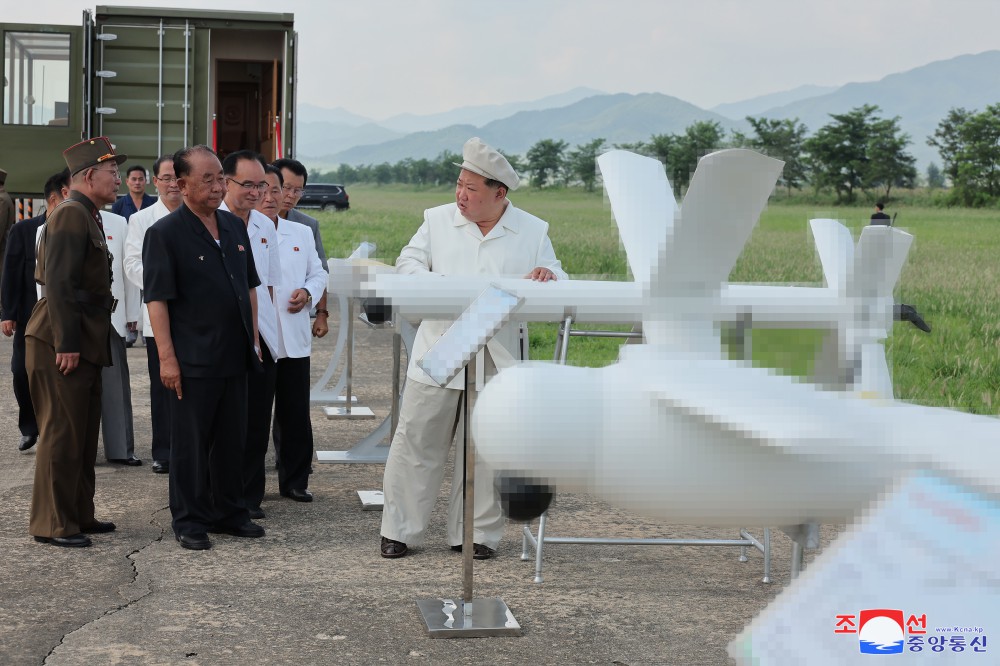North Korean leader Kim Jong Un has issued directives for the “mass production” of attack drones, as reported by state media on Friday. This announcement comes amid growing unease regarding North Korea’s escalating military cooperation with Russia, which has raised alerts among regional powers.
The drones, first showcased in August, are believed to have been influenced by technological advancements stemming from North Korea’s emerging alliance with Russia. The relationship has deepened following a landmark defense pact, which has led to accusations that North Korea may have dispatched thousands of troops to aid Moscow in its ongoing conflict in Ukraine. This heightened military collaboration prompted South Korean President Yoon Suk Yeol to express concerns over potential transfers of sensitive military technologies from Russia to North Korea.
Reports indicate that Kim Jong Un personally oversaw the testing of drones capable of targeting both land and maritime objectives, developed by North Korea’s Unmanned Aerial Technology Complex. The Korean Central News Agency (KCNA) quoted Kim as he emphasized the urgency of establishing a serial production system and transitioning to full-scale mass production of the drones.
These unmanned aerial vehicles are engineered to carry explosives and execute deliberate crashes into enemy targets, functioning similarly to guided missiles. KCNA highlighted that the recent tests demonstrated the drones’ precision in hitting predetermined targets after navigating set flight paths.
Kim characterized the drones as an “easy to use” and economically viable “component of striking power,” indicating their diverse applications within military operations. He noted that the development of unmanned hardware systems had recently gained significant priority in North Korea’s military strategy.
Experts analyzing the images released by state media observed similarities between the North Korean drones and several foreign models, such as the Israeli-made “HAROP,” the Russian-made “Lancet-3,” and the Israeli “HERO 30.” The consensus is that North Korea may have acquired some of these advanced technologies from Russia, which itself is believed to have received them from Iran. Iran, in turn, is suspected of obtaining access to the technologies through hacking or other means targeting Israeli sources.
The dynamics on the Korean Peninsula further complicated in 2022 when North Korean drones crossed the border, largely evading interception by South Korean military forces due to their small size. In response to the increasing drone threats, South Korea established a dedicated drone operation command last year. Tensions further escalated earlier this year when Pyongyang accused Seoul of infringing upon its sovereignty by deploying drones over its territory to distribute propaganda materials, an allegation that South Korea’s military has dismissed.
In a significant shift of rhetoric, North Korea amended its constitution in October to explicitly label South Korea as a “hostile” state, reflecting a pronounced deterioration in relations since Kim Jong Un’s declaration in January that Seoul was considered North Korea’s “principal enemy.” The North has persisted in its defiance of United Nations sanctions with ongoing ballistic missile tests and, in a recent show of force, destroyed transportation infrastructure connecting it to South Korea.





